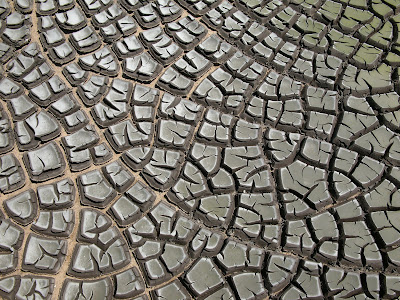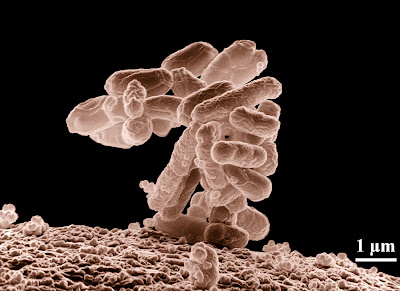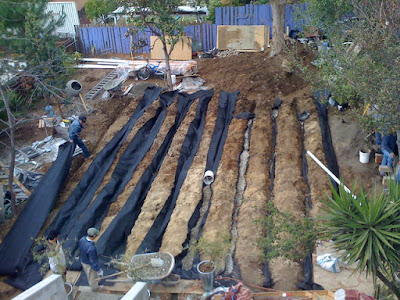Septic System Mapping - From Your Toilet to Your Leach Fields
Bernard Gilliam — Septic System Mapping - From Your Toilet to Your...
https://pre-college-fitblr.tumblr.com/post/618607016303362050/septic-system-mapping-from-your-toilet-to-your#_=_
Septic System Mapping - From Your Toilet to Your Leach Fields
Welcome to our latest post on septic systems. In this article we’ll be diving into how the system actually processes waste from toilet to drain field. The process of collecting solid waste in the tank to properly processing the effluent on site is a much simpler process than one would think.
In poor soil areas that lack proper perk rates, or high water tables are in play, the design and process of installing the entire septic system, but especially the leaching or drain field section, is usually much more complicated and therefore more expensive to install.
How Septic Systems Work
If you’re having a new septic system installed at your home or business, you may find it interesting to know that the basic components of a septic system are fairly simple. This basic septic system design has worked for many properties for decades, primarily using gravity to safely remove e-coli bacteria and wastewater back to the ground.
Septic systems are used to treat household wastes when a connection to a municipal city sewage system is not available. These systems are on site because they are intended to treat wastewater where it is actually generated. Anything that goes down the drain, every drop from your shower, and every flush of your toilet flows out to your onsite wastewater system.
Septic System Bacteria and Microorganisms
Typically a septic system consists of a storage tank a network of pipes and billions of microorganisms inside the tank that help process your waste. Most rural homes have what’s defined under their local building and health department regulations as a class for septic system that is a septic tank along with a leaching bed or a filtering drain bed, all buried beneath the ground.
Basically the idea is to treat the wastewater, first of all, typically through a septic tank. The septic tank will settle some of the solids out from the effluent and provide a little bit of the pre-treatment phase. After that the effluent is sent to some kind of soil absorption system, sometimes called a leaching bed, where you would further treat the effluent. Finally the effluent will trickle into the end of the drain field trenches. The waste flows to the first compartment of the septic tank where the heavy solids settled and the lighter materials, fat, oils and greases, float to the top as scum.
Baffles and screens keep this scum layer from flowing out to the leaching fields. The scum is removed when the tank is pumped out during regular septic service maintenance. A small amount of fine organic particles may settle in the second compartment of the tank where almost all of what’s left breaks down. In onsite wastewater sewage systems built or upgraded after 2005, an effluent filter is required to trap and help decompose any remaining particles before they get to the leaching area.
The leaching bed is made up of a network of perforated polyvinyl chloride drain pipes. These PVC pipes disperse the effluent allowing the filtered liquid to seep into the ground where the bacteria and other organisms continue to break it down and where it is further filtered by washed crushed stone and septic approved sand that surround these pipes and the soil below.
Septic System Components - From House to Drain Fields
Septic systems are only as effective as the sum of their parts. In order to have a properly functioning septic system, you need the right size tank and a healthy drain field, just to name a few. If your drain field is deteriorating from age, is damaged, or needs to be replaced for whatever reason you should contact a septic system inspection technician and or your local health sanitarian for professional advice and to determine how extensive the repairs on your system my need to be, or if an entire renovation of your leaching fields is in order.
Read more on septic systems and the processing of effluent and solid waste by clicking on this hyperlink. https://www.pdffiller.com/5645639-fillable-glenwild-design-guidelines-form Here’s an in-depth report in PDF form written by Olivia Jimenez, B.A. on the long-term affects of septic systems when installed in close proximity to lakes, bodies of water and reservoirs in Central Texas.
Check out more great technical information on everything you want to know about septic systems on our blog.
via Bernard Gilliam https://pre-college-fitblr.tumblr.com/
Posted on May 20th, 2020
Bernard Gilliam — Septic System Mapping - From Your Toilet to Your...
Bernard Gilliam — Septic System Mapping - From Your Toilet to Your...
https://pre-college-fitblr.tumblr.com/post/618607016303362050/septic-system-mapping-from-your-toilet-to-your#_=_
Septic System Mapping - From Your Toilet to Your Leach Fields
Welcome to our latest post on septic systems. In this article we’ll be diving into how the system actually processes waste from toilet to drain field. The process of collecting solid waste in the tank to properly processing the effluent on site is a much simpler process than one would think.
In poor soil areas that lack proper perk rates, or high water tables are in play, the design and process of installing the entire septic system, but especially the leaching or drain field section, is usually much more complicated and therefore more expensive to install.
How Septic Systems Work
If you’re having a new septic system installed at your home or business, you may find it interesting to know that the basic components of a septic system are fairly simple. This basic septic system design has worked for many properties for decades, primarily using gravity to safely remove e-coli bacteria and wastewater back to the ground.
Septic systems are used to treat household wastes when a connection to a municipal city sewage system is not available. These systems are on site because they are intended to treat wastewater where it is actually generated. Anything that goes down the drain, every drop from your shower, and every flush of your toilet flows out to your onsite wastewater system.
Septic System Bacteria and Microorganisms
Typically a septic system consists of a storage tank a network of pipes and billions of microorganisms inside the tank that help process your waste. Most rural homes have what’s defined under their local building and health department regulations as a class for septic system that is a septic tank along with a leaching bed or a filtering drain bed, all buried beneath the ground.
Basically the idea is to treat the wastewater, first of all, typically through a septic tank. The septic tank will settle some of the solids out from the effluent and provide a little bit of the pre-treatment phase. After that the effluent is sent to some kind of soil absorption system, sometimes called a leaching bed, where you would further treat the effluent. Finally the effluent will trickle into the end of the drain field trenches. The waste flows to the first compartment of the septic tank where the heavy solids settled and the lighter materials, fat, oils and greases, float to the top as scum.
Baffles and screens keep this scum layer from flowing out to the leaching fields. The scum is removed when the tank is pumped out during regular septic service maintenance. A small amount of fine organic particles may settle in the second compartment of the tank where almost all of what’s left breaks down. In onsite wastewater sewage systems built or upgraded after 2005, an effluent filter is required to trap and help decompose any remaining particles before they get to the leaching area.
The leaching bed is made up of a network of perforated polyvinyl chloride drain pipes. These PVC pipes disperse the effluent allowing the filtered liquid to seep into the ground where the bacteria and other organisms continue to break it down and where it is further filtered by washed crushed stone and septic approved sand that surround these pipes and the soil below.
Septic System Components - From House to Drain Fields
Septic systems are only as effective as the sum of their parts. In order to have a properly functioning septic system, you need the right size tank and a healthy drain field, just to name a few. If your drain field is deteriorating from age, is damaged, or needs to be replaced for whatever reason you should contact a septic system inspection technician and or your local health sanitarian for professional advice and to determine how extensive the repairs on your system my need to be, or if an entire renovation of your leaching fields is in order.
Read more on septic systems and the processing of effluent and solid waste by clicking on this hyperlink. https://www.pdffiller.com/5645639-fillable-glenwild-design-guidelines-form Here’s an in-depth report in PDF form written by Olivia Jimenez, B.A. on the long-term affects of septic systems when installed in close proximity to lakes, bodies of water and reservoirs in Central Texas.
Check out more great technical information on everything you want to know about septic systems on our blog.
via Bernard Gilliam https://pre-college-fitblr.tumblr.com/
Posted on May 20th, 2020
Grease Trap Cleaning Near Me Grease Trap Cleaning Hub Medium
Posted on February 26th, 2019







